Each vegetable garden is a special and precious place as we invest lots of labor hours, energy, and money into it. Our growing spaces feed our families and provide a space to relax, and work out. Whether we have a large or a tiny garden, it is important to us gardeners make the most of our veggie garden space.
To make the most of the veggie garden space:
- Maximize the space by extending the growing season by starting growing early using frost covers, hoop tunnels, greenhouses, and hoop houses.
- When planting, use the closest recommended spacing.
- Plant in clumps
- Succession planting will maximize the growing season by planting new vegetable seedlings right after something is pulled out.
- Interplanting will buy time and space by growing fast-maturing varieties next to the slow-maturing ones.
- Vertical gardening is ideal for small spaces using trellising, fences, walls, arches, and fun teepees.
- Use tall sturdy plants like corn to support climbing vegetables like pole beans or peas.
- When out of growing space, use containers, window boxes, hanging baskets, stackable planters, and vertical planters to expand your garden.
- Turn your lawn, yard, or driveway into a garden or edible landscaping.
- Using dwarf varieties and baby vegetables are ideal for container gardening, balconies, patio garden, and small limited spaces.
- The best vegetables to make the most of the growing season are high-yield vegetables, which provide multiple harvests using cut and come again technique.
- By creating a relaxing space in your garden, you will get the most out of it when harvesting and resting.
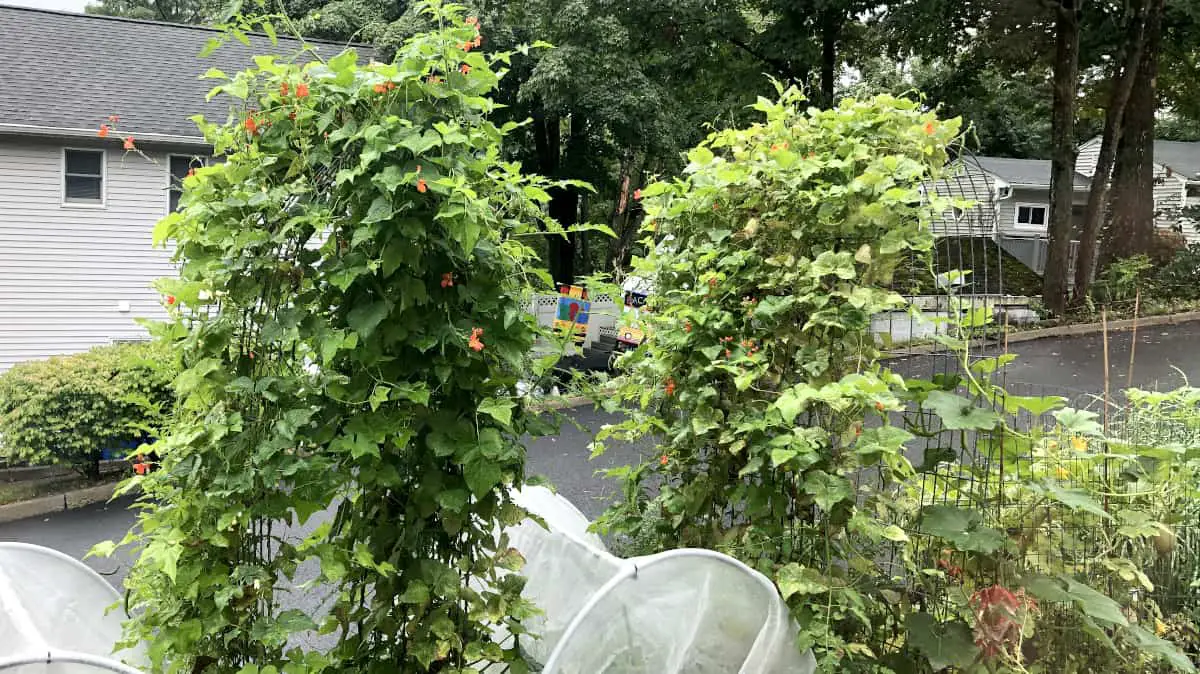
How to maximize growing space by extending the growing season
Maximizing growing space by extending the growing season means planting earlier than usual by using cold frames, frost covers, hoop tunnels, greenhouses, and hoop houses. The same method can be used twice a year, early in spring and late autumn till early winter. Planting under the cover allows plants to yield longer since they are protected from coming winter weather elements.
Covers and greenhouses warm up the soil quicker than it would warm up naturally without cover and thus the soil can be planted sooner. By planting plants under protection, they are protected from cool weather, cold and strong wind, and frost.
How to use the closest recommended spacing to maximize garden space
Plant the seeds and seedlings using closes recommenced spacing to maximize your growing space. Each plant comes with a space recommended for planting. Using the closest recommended spacing will allow you to plant more plants closer together while still providing them enough room to grow and mature without competing for sunlight, water, and nutrients.
Recommended spacing indicates the space needed for the size of the fully mature plant. Leafy greens and root crops however can be harvested before they reach their full maturity and still be of a usable size and great taste. If you harvest some vegetables before they reach their full mature size you can squeeze more plants in the same space. Always harvest the largest of the group while letting the small ones grow.
What is planting in clumps
Planting in clumps means that the seeds are planted in groups of 2-5. There are some vegetables like leafy greens, bulbs, and root crops that can be planted in clumps. Vegetables like beets, leeks, onions for bulbs, turnips, and radishes can be planted in clumps of 5. Leafy greens such as kale, mixed salad leaves, arugula, and spinach can be planted in a group of 4. And some delicious herbs like basil, dill, coriander, parsley, and chervil can be also planted in clumps of 3.
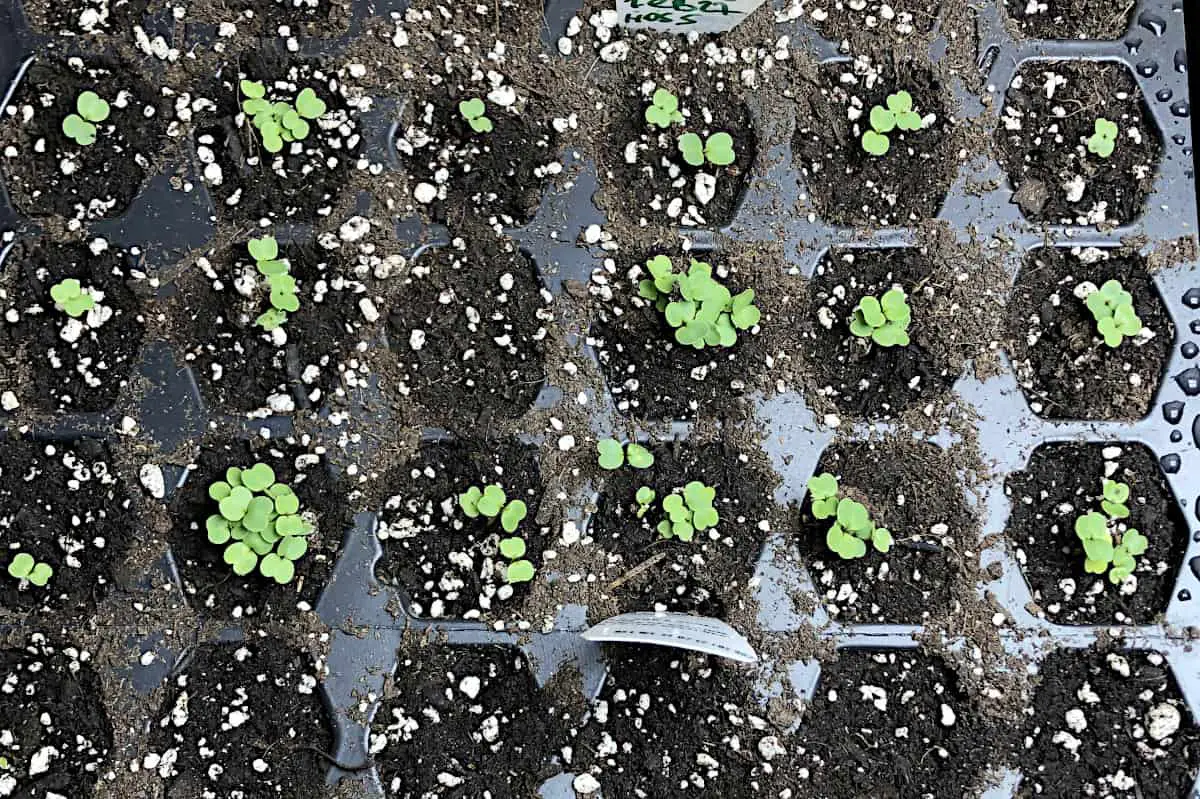
Planting in clumps will provide continuous harvest while using a minimum of growing space. Harvest the largest of the clump by turning the roots and pulling them out. Leave the smaller of the clump to grow and then come to harvest again.
This technique is one of the best to maximize small and limited growing spaces and container gardening.
How to use succession planting to maximize growing space
Succession planting means as you pull something out, you immediately plant something new in its place. Thus the garden space is occupied for the entire season and no growing space is left empty. The best way to succession planting is to have new seedlings ready to go into the ground as soon as you harvest something out of it.
The succession planting method eliminates periods of time when the soil is bare and can become depleted by the sun, or overgrown with weeds. It gives you always something to harvest out of your growing space.
How to succession plant
To ensure you always have seedlings ready to be planted as soon as you harvest something is to plant seeds suitable for the season every two to three weeks. Planting new seedlings in place of vegetables you just pulled out of your growing space is called succession planting.
The best vegetables for succession planting are the ones that grow and mature fast. Vegetables that grow and are ready to be harvested in a relatively short time are leafy greens like arugula, endive, lettuce, Bok choi, spinach, and Swiss chard. Root vegetables that are great for succession planting are beets, carrots, radishes, and turnips. Cabbage family vegetables are also suitable especially in early spring and later autumn including, broccoli, cauliflower, kale, and kohlrabi. I like to plant in succession herbs like dill, basil, and cilantro.
How to use interplanting to maximize garden space
Interplanting means planting fast-growing crops alongside slow-growing crops. It is filling the gaps. By interplanting slow and fast-growing crops the growing space is used to its max while the harvest is being enlarged.
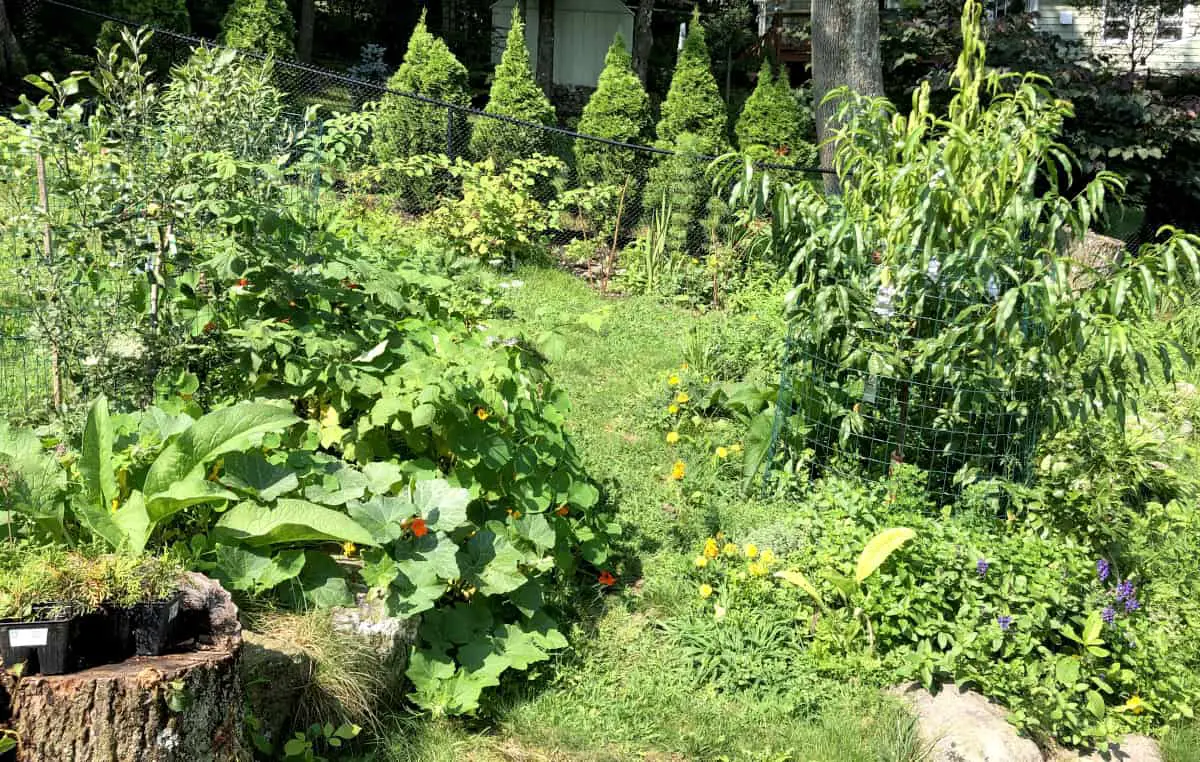
For example, tomato plants can occupy a certain space during the whole growing season while yielding well. Growing tomatoes vertically will allow you to plant short and fast-maturing vegetables around them. Short and fast-maturing vegetables that can be planted around a tomato plant are radishes or lettuce. You basically use one growing space but harvest two different crops from it. Once quickly maturing radishes are harvested from under the tomato, you can plant lettuce instead. This would be your third crop using the same growing space. Beets and green onions can also be planted around tomato plants as interplaying crops.
Instead of leaving gaps between plans, fill them up with quick maturing vegetables suitable for that specific gap. Lettuce is a great plant to fill the gaps. Lettuce germinates fast and is a fast-growing and maturing vegetable. It can be your best filler if you find gaps in already harvested carrot or beet spaces, or if you find that some seeds did not germinate in certain spots. Do not leave gaps in our precious growing space, rather fill it with suitable crops.
Last year I planted carrots between the rows of cabbage and I had the best carrots yet! Cabbage doe not have very deep roots but carrots do. So they grow well together. Carrots have slender tops and will grow without any problem squeezed between maturing cabbage leaves. And time is ready for carrots to be harvested, I can easily spot them and pull them out without damaging cabbages. And I can protect both crops from wild rabbits with the same netting cover.
You have probably heard about three sisters being planted together. The three sisters are corn, squash, and climbing beans that are interplanted. These three grow in harmony with corn providing a climbing trellis for the pole beans while squash shades the ground keeps the moisture in and keeps out weeds.
I find myself often walking through the garden to look for empty gaps to be filled. I just cannot get over the thought of having empty ground somewhere doing nothing for me and my family. Empty space in my garden is a no-no.
How to use vertical gardening and trellises to make the most of vegetable garden space
Use vertical space to extend and maximize the goring space in your garden by growing vining plants on trellises and arches rather than growing them horizontally. Walls and fences can be used to mount planters and baskets. Fences can be also used as trellises. Using vertical and stackable planters can also expand your garden with lots of additional square footage. When out of growing space, look around you and think about what other vertical space is not utilized but could be useful to grow food.
Vertical gardening is especially useful when gardening on a patio, balcony, or on rented properties where one is not allowed to set up an inground or raised bed garden. When growing vertically, you can count not only your horizontal square footage but also your vertical. Growing vertically might easily double your growing space.
Where there is no space go horizontally, go vertically, and let the sky be the limit! Fun teepee structures in the garden can create a relaxing space while providing a way for pole beans or peas to grow.
I like to use cattle panels to make arches for my pole beans, peas, cucumbers, and vining squash plants as well as a support for tomatoes. Because cattle panels are strong, tall, and wide and don’t cost a leg and an arm they are my go-to support for plants.
The vertical garden covered in greens and colors of plants and fruit creates a beautiful ambiance in the garden. Because vertically planted plants fruit height above the ground, they are protected from small garden pests like groundhogs, wild rabbits, and such. Flowering plants erected so high on trellises also attract pollinators and hummingbirds.
How to use containers to expand your garden space
When out of garden space, simply fill up containers, window boxes, hanging baskets, stackable planters, and vertical planters with your preferred soil to expand your growing space. Plant your seeds and seedlings in soil-filled containers. Place your newly planted containers in a sunny location and close to a water source and treat it as a regular garden. When using containers, ensure that they have holes on the bottom for drainage. Choose the right size of the container for each crop to accommodate the size of the roots as well as the size of the maturing crop.
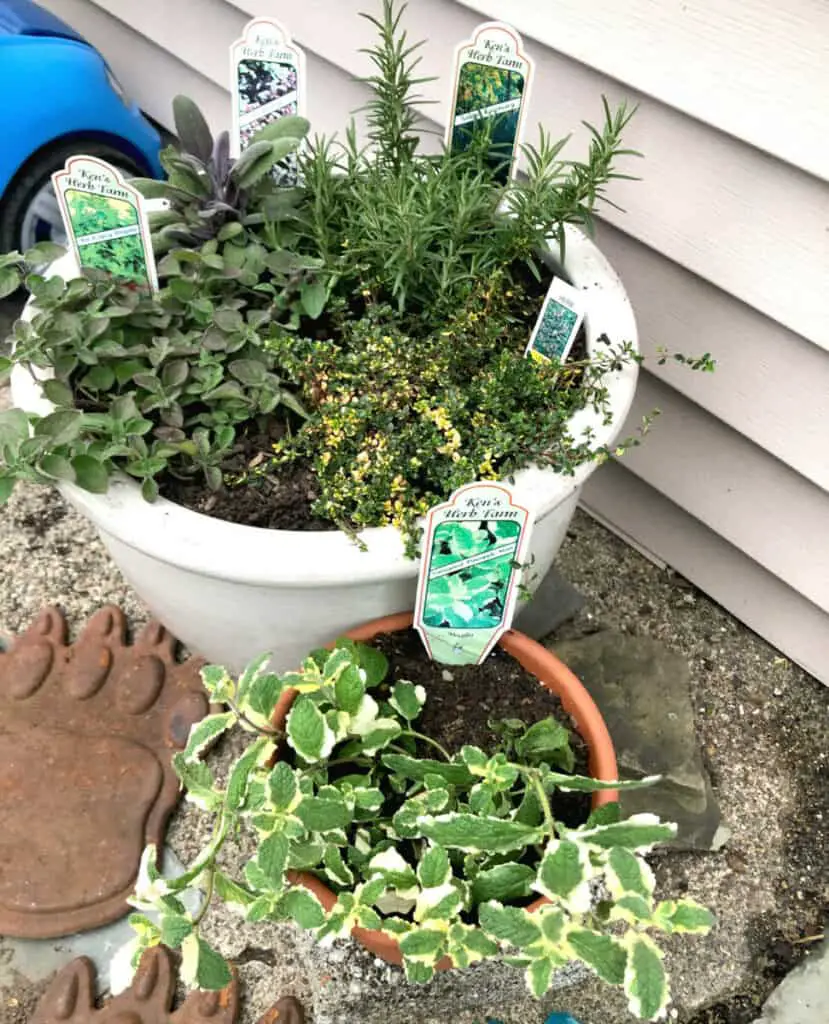
Yes, containers can be your best garden friends when you find yourself with plenty of extra seedlings that need to be planted as soon as possible, but you are out of space. Simply create a new container garden to accommodate your needs.
How to turn lawn, yard, driveway into the garden or edible landscaping
The lawn and yards can be turned into a garden or edible landscaping. To turn a lawn into a garden, grass, and weeds need to be eliminated using sheet layering or digging the roots out. Sheet layering means layering weed barriers such as cartons, woodchips, and gardening soil on top of each other and thus instantly turning the grassy area into an instant garden. If creating a garden space in autumn, the grass area can be cowered by a dark tarp for the weeds and grass to die off and the soil can be turned and amended in early spring. The driveway can be turned into a garden using the container gardening method. Edible landscape means interplanting our ornamentals with edibles. Some of us grow spaces with homeowners associations or city restrictions. In this case, find out edible perennials and annuals that could be incorporated into the landscape without breaking the restrictions. Edible hedges are a great way to incorporate food into the landscape. Instead of planting non-edible hedges, go for hazelnut hedges, blueberries, raspberries, blackberries, Nanking cherry, and rosemary to name a few. Instead of non-fruiting trees, plant fruit trees that provide stunning blooms in spring, and fruit in summer, and display colorful leaves in autumn.
Read about the best type of garden style for vegetables in one of my articles where I talk about inground gardening, raised beds, and container gardening.
I have a small garden because my property is small. Still, I find my garden is ever-expanding. I say, if you can’t find a growing space, then create one! I not only turned my backyard into a garden but my lawn and a property line as well. I covered almost 75% of my property with woodchips just so I could plant a seedling wherever I wanted if I needed to.
I constantly find myself running out of growing space, as I do not limit myself by the number of my raised garden beds. I think out of the garden bed box! I grow food wherever I can find good soil. If I cannot find a suitable space, I fill up containers!
How to use dwarf and baby vegetable and fruit varieties for container gardening, balconies, patio garden, and small limited spaces
Dwarf vegetable and fruit varieties yield fruit the same as common varieties but the size of the plant and the fruit is smaller. When tight on garden space especially when tending a balcony, patio, or a tiny garden, the dwarf varieties that can be heavy produces are the best way to maximize the space. Still, there can be plenty of yields harvested off of dwarf varieties. You can also grow regular-size cultivars but harvest them prematurely as baby vegetables, meaning before they reach their mature size to save space. Carrots, and other root crops, leafy and cabbage vegetables, baby green onions, can be harvested as baby vegetables prematurely when grown in small areas. Most of the well-known vegetables can be also found in their dwarf forms like tomatoes, cauliflower, carrots, green beans, lettuce, patty pan squash, mini bell peppers, kale, peas, turnips, cucumbers, pumpkins, and some melons.
How to maximize garden space by planting high-yield vegetables and fruit
High-yield vegetables and fruit are the best choices to grow in small gardens. Perennials take time to establish but once they are established, they can’t be beaten in the amount of yield. Plant perennials as soon as you decide on a garden layout. High-yielding veggies and fruit take as much space as any other vegetable would but deliver much more yield. Some of the highest-yielding vegetables are tomatoes, zucchini, cucumbers, green beans, Swiss chard, and butternut squash along with spaghetti squash in terms of fruit weight and nutrients. Some of the highest-yielding fruits are fruiting bushes, canes, and fruit trees like blackberries, mulberry, peaches, plums, and apples. Some vegetables are high yielding because of how much of it you can grow in small spaces.
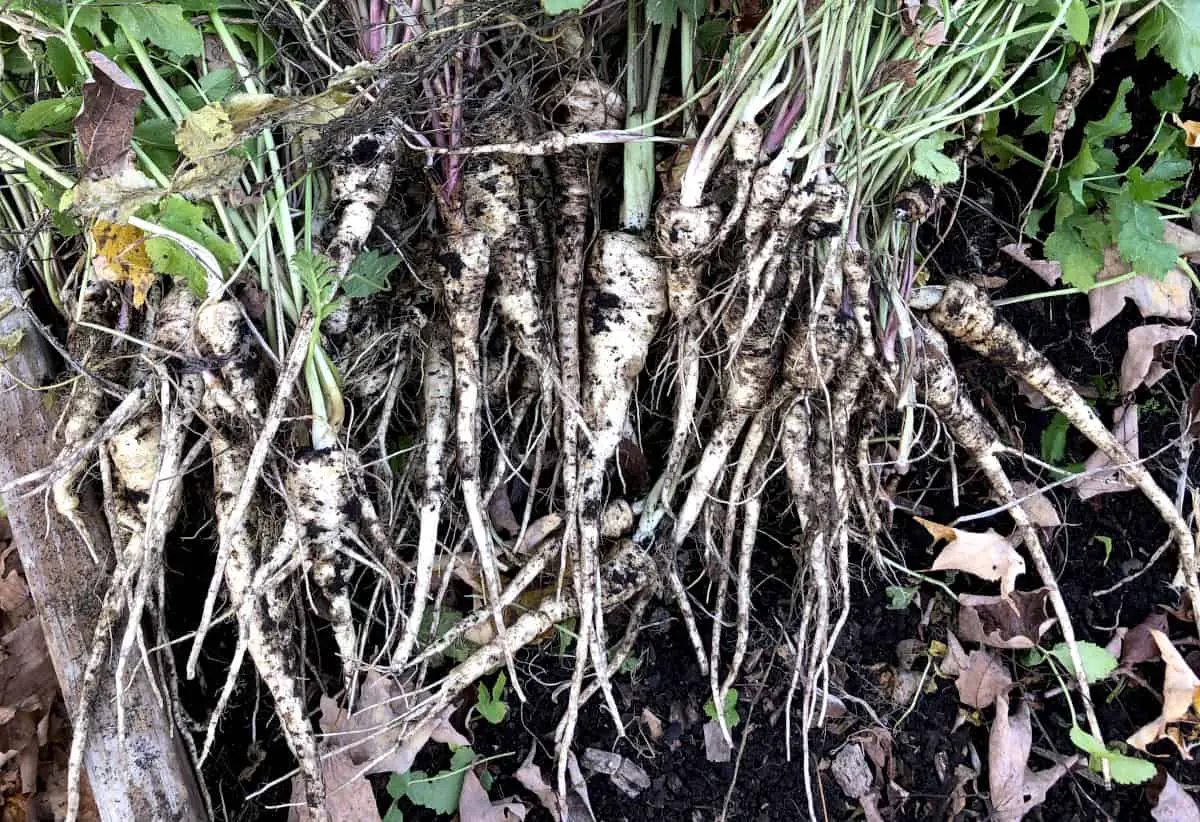
Crops like carrots, onions, radishes, garlic, and beets take a small amount of square footage but a lot can be harvested. For example, in only 1 square space you can harvest 18 large carrots or more if you choose to overseed and harvest smaller sizes during thinning. One square foot of growing space can yield 9 beautiful-sized garlic bulbs with about 7 cloves per bulb, that’s about 63 cloves to cook with or store.
Most of my pantry stocking crops are high-yielding vegetables as they deliver the biggest bang for my effort, growing time, and space.
How to maximize garden space by creating a space to relax at
Garden space does not have to be only about growing food. Turn your growing space into a multipurpose space. Use your garden to relax in as well. By creating a relaxing space for yourself and your loved ones you will spend more time outdoors and you will find yourself visiting your patch not only to work in it but to relax as well. Create interesting living features or structures in your garden by using vertical gardening, trellising, natural teepees, private corner using an edible living fences. Place a bench next to fruiting bushes so you can eat off of them while sitting. Fix a bird feeder or a bird bath feature to attract pollinators such as bees, butterflies, and colorful hummingbirds and songbirds to sing just for you.
You can also create a kid’s garden for your little ones to practice and learn gardening skills. We do not have a sand pit for my little one, instead, we do have a pile of woodchips where he enjoys digging trenches and holes, uses his tracks to transport woodchips, and learns gardening skills by planting his own garlic cloves and pea seeds here and there. He’s full of excitement seeing his own seeds sprout. Our garden is our playground and a walking trail. I often walk through our green spaces to enjoy fresh air, flowers, fruit, beautiful views, and wildlife. It relaxes me and gives me space to pray, meditate and clear my mind. My garden is often a place where I listen to sermons while working or walking, it is a place where I grow my food and grow myself.
What is the best type of garden for vegetables?
How to prepare a vegetable garden layout
How to plan a vegetable garden
What is the easiest food crop to grow?
Most high-yielding fruits and vegetables to grow in pantry stocking garden

